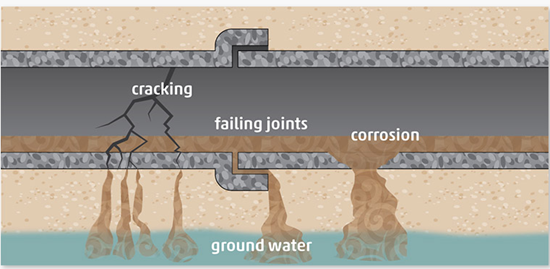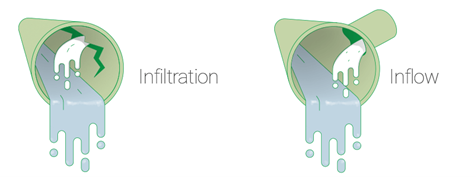What is Infiltration and Inflow?
Inflow & infiltration are defined as groundwater and stormwater that enter a sewer system. Collections systems are damage when they are force to transport more flow than they are designed to handle. Inflow & Infiltration accounts for up to 45% of the annual flow to treatment plants.
Infiltration occurs when groundwater seeps into sewer pipes through cracks, leaky pipe joints and/or deteriorated manholes.
Inflow is stormwater that enters the sewer system through rain leaders, basement sump pumps or foundation drains illegally connected to the sewer. Together I&I place a burden on collection systems and wastewater treatment facilities.
What is exfiltration?

Exfiltration is defined as the leakage of wastewater out of a sanitary sewer system. Exfiltration seeps out of broken or damaged pipes and manholes. Wastewater that leaks from defective pipe joints and cracks may contaminate ground and surface water nearby water bodies. It causes pipe structures failures due to erosion of soil support and ground subsidence.
How to calculate inflow and infiltration?
Flow monitoring is the practice of measuring wastewater flow in the system over time and comparing it with a baseline flow estimate. These measurements are used to determine the amount of I&I in the sewer system. Electronic velocity and depth recording devices are strategically placed throughout the system. Studies generally last 60–120 days. Flow monitoring can be used as a tool in condition assessment: to identify areas further CCTV inspection is needed and to quantify the severity of I&I identified during CCTV inspection.

Source: Envirosight


Recent Comments